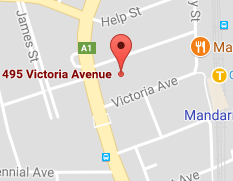On 17 December 2018 the Government provided its Mid-Year Economic and Fiscal Outlook update for the 2018/19 year. In making the announcement it also included several measures that impacts directly on the aged care sector.
Government Announcements in detail
The Government will provide $454.9 million over four years from 2018 19 to support older Australians with improvements to residential and home care arrangements, including:
- $287.3 million over three years from 2018 19 for 5,000 level 3 and 5,000 level 4 home care packages;
- $56.4 million over four years from 2018 19 to assist people in home care by reducing the maximum basic daily fee that service providers can charge; and
- $111.2 million over four years from 2018 19 to increase the residential care viability and homeless supplements by 30 per cent to support people in residential aged care in regional, rural and remote areas of Australia and those at risk of homelessness.
In addition, the Government will provide $81.7 million over four years from 2018 19 to support older Australians through better quality of services, improved regulatory arrangements for aged care service providers, and new workforce arrangements for people employed in aged care, including:
- $39.3 million over four years from 2018 19 to create an additional 300 Transition Care Places in Western Australia by 2020 21, to support up to 1,300 older people each year to return to their homes after a hospital stay;
- $30.5 million in 2018 19 to introduce an accommodation management payment in the Continuity of Support program;
- $15.6 million over four years from 2018 19 to the Department of Health, the Australian Aged Care Quality Agency and the Aged Care Quality and Safety Commission to improve regulatory arrangements and the quality of aged care services for people receiving Commonwealth funded home care and residential aged care, including expanded audit and compliance processes;
- $4.0 million in capital funding in 2018 19 to contribute to the expansion of facilities at Clare Holland House in Canberra to improve the provision of palliative care services;
- $3.9 million over three years from 2018 19 to contribute to the expansion of the Strathalbyn Aged Care Facility to increase aged care services by an additional 12 beds; and
- $0.6 million in 2018 19 to support implementation with aged care providers of workforce improvements recommended in the Aged Care Workforce Taskforce report, A matter of care — Australia’s aged care workforce strategy.
The cost of this measure will be partially met from within the existing resources of the Department of Health.
Other health measures with an impact on residential aged care facilities included:
- Provision of $98.0 million over four years from 2018 19 to increase the Medicare Benefits Schedule (MBS) fees for General Practitioners (GPs) attending a residential aged care facility to help ensure that GPs have appropriate incentives to provide care in aged care facilities;
The following is an extract from the foreword to the MYEFO papers:
The Government is continuing to invest in aged care, with total spending expected to reach a record $23.5 billion in 2021-22.
This includes supporting older Australians to access quality aged care services and improving regulatory settings in the sector. An additional $287.3 million has been provided to bring forward by one year to 2018-19 the release of 5,000 level 3 and 5,000 level 4 home care packages to connect more older Australians with high-level home care support. The Government is also providing $56.4 million to assist people in home care by reducing the maximum basic daily fee service providers can charge. In addition, the Government will provide $111.2 million to increase the residential aged care viability and homeless supplements by 30 per cent to support people in residential aged care in regional, rural and remote areas of Australia and those at risk of homelessness.
The Government has established a Royal Commission into Aged Care Quality and Safety to examine the quality and safety of care provided to senior Australians in residential and home-based aged care and to young Australians with disabilities living in aged care. The Government will provide $104.3 million over four years from 2018-19 for the Royal Commission and $17.2 million over two years from 2018-19 to the Department of Health, the Australian Aged Care Quality Agency and the Australian Aged Care Quality and Safety Commission to support activities associated with the Royal Commission.
Commentary and Economic Context of the Announcements
The various measures announced yesterday, while welcomed, are unlikely to improve the financial situation that many aged care providers currently find themselves in. The latest StewartBrown Financial Performance Survey for the September 2018 quarter shows that many aged care providers are continuing to struggle financially.
Residential Care
While there have been modest traditional seasonal uplifts in the results of residential aged care providers, the September 2018 results are still well below those for the same period in the previous financial year. Except for the increase in the viability supplement there was no increase in funding for the residential aged care facilities in the announcements today.

As part of our analysis of the June 2018 survey results and the settings that we were observing for the current 2019 financial year, we forecast what we believed would be the average results for residential aged care facilities and the results are shown in the graph below. While the increase in the viability supplement should improve the results of a relatively small number of providers, we do not see these forecasts changing significantly as a result of measures announced yesterday.

For those facilities that do qualify for a viability supplement, they will see them increase by 30% as a result of announcements made yesterday. This will be welcomed and as shown in the graph below is desperately needed by those facilities operating in rural and remote areas.

Home Care
With respect to home care providers, the announcements of additional packages will be welcomed. The increase in the number of high care packages should improve the financial performance of providers who will provide the services to these packages as margins are generally higher for high care packages. This measure should also help to alleviate the waiting lists for high care packages in the community.
The September Survey has seen a general decline in financial returns for providers compared to the same quarter in 2017.

The announcements of an additional 10,000 high care packages from Calendar year 2019 is aimed at addressing the increasing waiting lists for those packages as shown in the graph below.

The measure to reduce the fee for low care packages (topped-up to the provider by the government) is interesting. We are yet to see the detail of how this measure is to be applied but it may have been better if it was accompanied by an announcement that the daily fee, even at the reduced level, was a compulsory charge, in the same way that it is in residential care and as recommended in the Tune recommendations. At present there is very little consistency in how providers are charging clients, if at all and this is affecting the viability of providers and, in some cases, their ability to compete against those that do not charge this fee at all.
It may also make it more difficult for providers to charge the higher fee when they transition someone from a low care package to a high care package. We do not know, based on the information released, whether this will affect clients that have been assessed for a high care package but are currently allocated a low care package. On the positive side, this measure might encourage more people to transfer from CHSP services to the low care home care packages.
It should be noted that there was no additional funding or other announcements in respect of CHSP.
Click here to Download the report.



